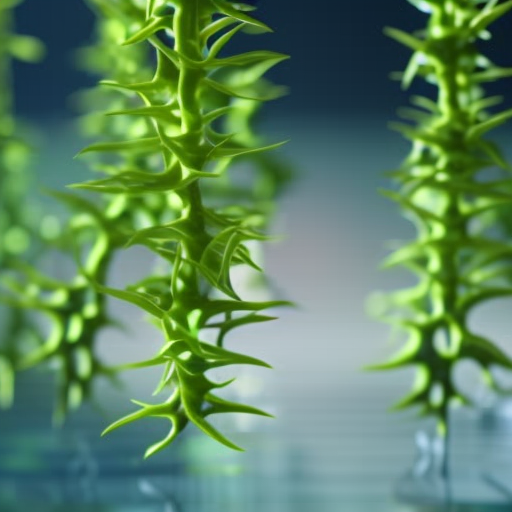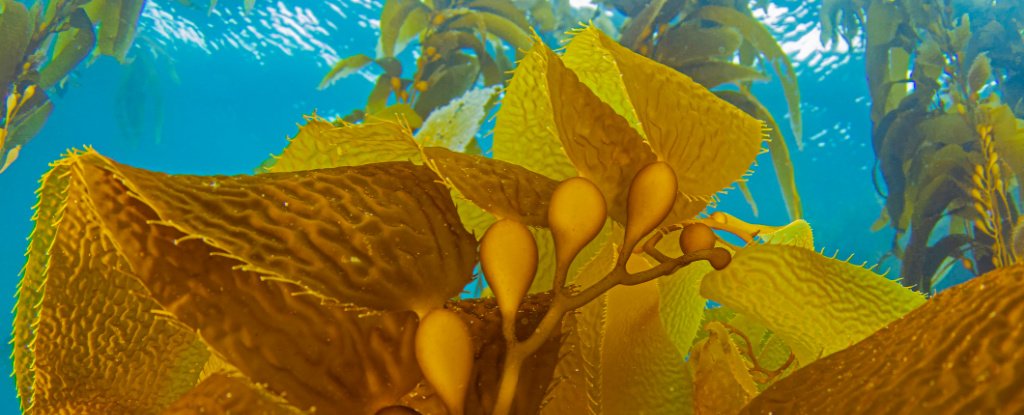
Sustainable Development Goals (SDGs) and Seaweed: A Potential Solution for Aging Skin

Introduction
Seaweeds have gained attention for their numerous potential benefits, ranging from carbon storage and reducing methane emissions to producing biofuels and renewable plastics. They also have wound-healing properties and possible anti-aging effects. The seaweed farming industry is thriving, and researchers continue to explore their potential applications.
Study on Seaweed Extracts and Skin Aging
A recent study conducted by researchers at Flinders University in Adelaide investigated the effects of extracts from two brown seaweeds on skin aging. The study utilized lab experiments with human-like skin cells and found that the seaweed extracts inhibited reactions associated with skin aging and increased collagen levels, one of the proteins responsible for youthful skin.
Potential of Brown Seaweeds
The study focused on three brown seaweeds: Ecklonia radiata, Cystophora moniliformis, and Cystophora siliquosa. The extracts from the two Cystophora species stimulated collagen production in the lab-grown cell lines. However, the production of elastin, another structural protein in skin, was not affected.
Anti-Glycation Effects
The researchers also tested the seaweed extracts’ impact on protein glycation, a process associated with aging skin. The extracts from C. moniliformis and C. siliquosa inhibited glycation activity in the experiments. This is a promising finding, as previous attempts to target this pathway have shown limited effectiveness and undesirable side effects.
Future Research and Clinical Trials
While these preliminary findings are encouraging, further research is necessary to develop a safe and effective product. Randomized clinical trials would be required to rigorously test the benefits of seaweed extracts on skin aging and ensure their safety for human use. It is important to note that not all seaweed supplements have been as effective as initially hoped, and factors such as cultivation conditions and other dietary factors can influence their outcomes.
Considerations and Recommendations
Before seaweed extracts can be widely used for anti-aging purposes, purification and formulation processes need to be developed. The concentrations used in cell studies may not be suitable for human use. Additionally, taking supplements does not always result in noticeable benefits for the skin. Protecting the skin from sun damage, maintaining a healthy diet, and avoiding cigarettes are recommended approaches for maintaining healthy skin.
Conclusion
The study highlights the potential of brown seaweeds in combating skin aging. However, further research and clinical trials are necessary to validate these findings and develop safe and effective products. Seaweed’s potential contributions to sustainable development align with the Sustainable Development Goals (SDGs), particularly Goal 3: Good Health and Well-being.
The study has been published in Algal Research.
SDGs, Targets, and Indicators Analysis
1. Which SDGs are addressed or connected to the issues highlighted in the article?
- SDG 3: Good Health and Well-being
- SDG 12: Responsible Consumption and Production
- SDG 13: Climate Action
- SDG 14: Life Below Water
The article discusses the potential anti-aging effects of seaweed extracts, which are relevant to SDG 3 (Good Health and Well-being). It also mentions the booming seaweed farming industry and the potential of seaweeds in various applications, which aligns with SDG 12 (Responsible Consumption and Production). Additionally, the article highlights the ecological significance of seaweeds and their role in sustaining coastal ecosystems, connecting to SDG 13 (Climate Action) and SDG 14 (Life Below Water).
2. What specific targets under those SDGs can be identified based on the article’s content?
- SDG 3.5: Strengthen the prevention and treatment of substance abuse, including narcotic drug abuse and harmful use of alcohol.
- SDG 12.2: By 2030, achieve the sustainable management and efficient use of natural resources.
- SDG 13.2: Integrate climate change measures into national policies, strategies, and planning.
- SDG 14.2: By 2020, sustainably manage and protect marine and coastal ecosystems to avoid significant adverse impacts.
The specific targets identified based on the article’s content include:
– SDG 3.5, as the potential anti-aging effects of seaweed extracts can contribute to strengthening the prevention and treatment of skin aging.
– SDG 12.2, as the sustainable management of seaweed farming and the efficient use of seaweed resources align with this target.
– SDG 13.2, as the article mentions the ecological significance of seaweeds in mitigating climate change impacts.
– SDG 14.2, as the role of seaweeds in sustaining coastal ecosystems is highlighted.
3. Are there any indicators mentioned or implied in the article that can be used to measure progress towards the identified targets?
- Collagen levels in human skin cell lines
- Effect on protein glycation
- Success in developing a safe product
- Results of randomized clinical trials
The article mentions indicators that can be used to measure progress towards the identified targets. These indicators include measuring collagen levels in human skin cell lines to assess the potential anti-aging effects of seaweed extracts. The effect on protein glycation is another indicator relevant to understanding the impact of seaweed extracts on aging skin. Additionally, the success in developing a safe product and the results of randomized clinical trials can be used as indicators to evaluate the efficacy and safety of seaweed extracts for anti-aging purposes.
4. Table: SDGs, Targets, and Indicators
| SDGs | Targets | Indicators |
|---|---|---|
| SDG 3: Good Health and Well-being | SDG 3.5: Strengthen the prevention and treatment of substance abuse, including narcotic drug abuse and harmful use of alcohol. | – Collagen levels in human skin cell lines – Results of randomized clinical trials |
| SDG 12: Responsible Consumption and Production | SDG 12.2: By 2030, achieve the sustainable management and efficient use of natural resources. | – Success in developing a safe product – Results of randomized clinical trials |
| SDG 13: Climate Action | SDG 13.2: Integrate climate change measures into national policies, strategies, and planning. | – Effect on protein glycation – Success in developing a safe product |
| SDG 14: Life Below Water | SDG 14.2: By 2020, sustainably manage and protect marine and coastal ecosystems to avoid significant adverse impacts. | – Effect on protein glycation – Success in developing a safe product |
Behold! This splendid article springs forth from the wellspring of knowledge, shaped by a wondrous proprietary AI technology that delved into a vast ocean of data, illuminating the path towards the Sustainable Development Goals. Remember that all rights are reserved by SDG Investors LLC, empowering us to champion progress together.
Source: sciencealert.com

Join us, as fellow seekers of change, on a transformative journey at https://sdgtalks.ai/welcome, where you can become a member and actively contribute to shaping a brighter future.






